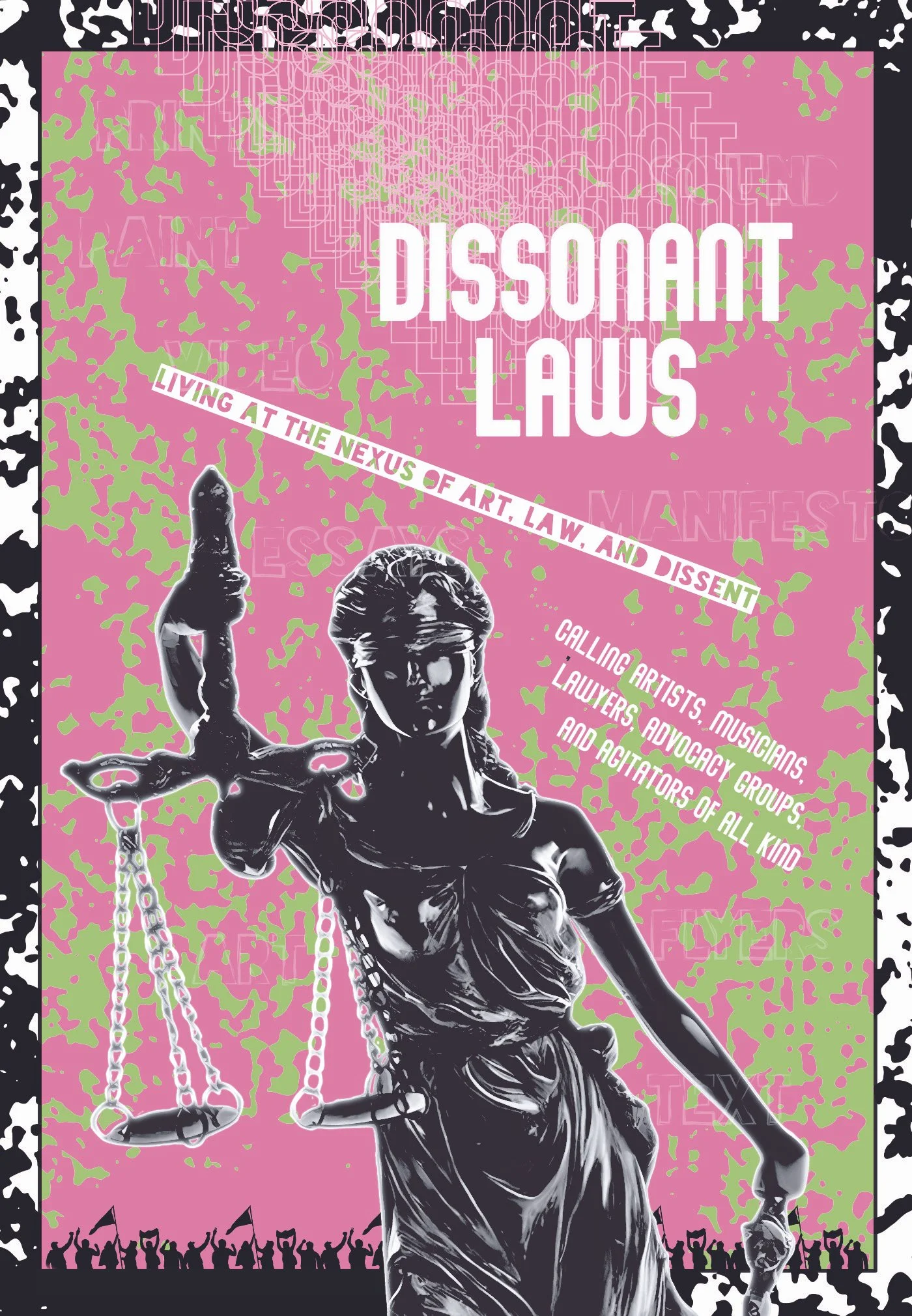DISSONANT LAWS
Dissonance: a lack of harmony, between notes in a given scale, or people in a given society. The word points to a breakdown of ‘common’ sense, a dissolution of the common agreements that provide structure.Agreements, in a democratic context, are bound up in legislation: laws that are followed - or broken - by members of the community.
Dissonant Laws seeks to unpick the relationship between citizens, authority, and rebellious invention. How do laws create or engender artistic resistance? And how do those forms of creative dissent in turn infer new forms of legality? What examples of artistic protest have emerged in response to legislative change?
We may question what we mean by aesthetic resistance, as each and any rebellious act requires agency, inspiration and organisation. It may be as clear as performance art, as flash mobs, murals, and event art movements that had a specific intention to break the law. Some most famous examples of broken laws may well be those that needed breaking: the Suffragettes, literally holding their bodies fast to the effigies and walls of the law and the sovereign state, ‘to test the statute’ as Hannah Arendt once said - which is a performance enough. The falling of the Corston Statue during Black Lives Matter Protests, a push of injustice to remove and replace what once stood as a reminder of the colonial (and ongoing) status quo, set in motion by layer upon layer legal imposition, and a flair to revolt, requite and express. Such acts may not just be fighting against existing laws, but equally pre-empting them. The rave culture of the 1990’s was not only an act of resistance but a radical reinterpretation of how groups of people might occupy space – of what it means to be social - a movement that resulted in the creation of the Criminal Justice and Public Order Act 1994 (hereinafter ‘CJA 1994’), illegalising raves, and banning music that “includes sounds wholly or predominantly characterised by the emission of a succession of repetitive beats” (section 63 (1)(B)). How did the form of the aesthetics impact the legislative response, and vice versa?
As part of a new exhibition taking place at The Foundry, Vauxhall, early 2026, we invite artists, musicians, lawyers, advocacy groups, and agitators of all kinds, to send their submissions that respond to the theme of Dissonant Laws. This may include reflections on historic examples (such as rave culture and the ensuing CJA 1994), or new forms of creative resistance and dissonance that engage with current legislation and legality.
We are seeking work in the following formats:
two dimensional works (prints, paintings, drawings, flyers, zines, posters, video works, etc.);
Sound works that can be included in the space (on headphone) or uploaded to an accompanying online gallery;
Text works (essays, articles, scores, manifestos, etc).
The exhibition takes place in collaboration with MEANS magazine (www.meansmagazine.com) and LORE (Legal Origins Rights Education & Art). The January issue of the magazine will be based on the theme of Dissonant Law, and submissions will be eligible to be presented in the physical magazine alongside the exhibition.
Please send artworks or outlines of proposed works to be completed by 15 November to info@lore.org.uk, with DISSONANT LAWS SUBMISSION and YOUR NAME in the subject line of the email.

